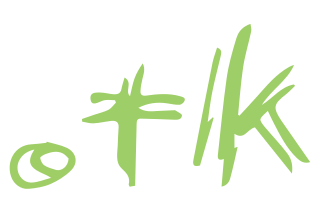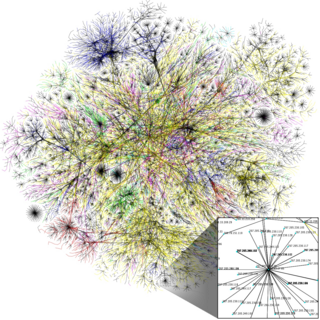
The Internet Corporation for Assigned Names and Numbers is a global multistakeholder group and nonprofit organization headquartered in the United States responsible for coordinating the maintenance and procedures of several databases related to the namespaces and numerical spaces of the Internet, ensuring the Internet's stable and secure operation. ICANN performs the actual technical maintenance work of the Central Internet Address pools and DNS root zone registries pursuant to the Internet Assigned Numbers Authority (IANA) function contract. The contract regarding the IANA stewardship functions between ICANN and the National Telecommunications and Information Administration (NTIA) of the United States Department of Commerce ended on October 1, 2016, formally transitioning the functions to the global multistakeholder community.

In the Internet, a domain name is a string that identifies a realm of administrative autonomy, authority or control. Domain names are often used to identify services provided through the Internet, such as websites, email services and more. Domain names are used in various networking contexts and for application-specific naming and addressing purposes. In general, a domain name identifies a network domain or an Internet Protocol (IP) resource, such as a personal computer used to access the Internet, or a server computer.
Spamdexing is the deliberate manipulation of search engine indexes. It involves a number of methods, such as link building and repeating related and/or unrelated phrases, to manipulate the relevance or prominence of resources indexed in a manner inconsistent with the purpose of the indexing system.
A domain name registrar is a company, person, or office that manages the reservation of Internet domain names.

Network Solutions, LLC, formerly Web.com is an American-based technology company and a subsidiary of Web.com, the 4th largest .com domain name registrar with over 6.7 million registrations as of August 2018. In addition to being a domain name registrar, Network Solutions provides web services such as web hosting, website design and online marketing, including search engine optimization and pay per click management.

.tk is the Internet country code top-level domain (ccTLD) for Tokelau, a territory of New Zealand in the South Pacific.

Domain name speculation, popular as domain investing, domain flipping or domaining in professional jargon, is the practice of identifying and registering or acquiring generic Internet domain names as an investment with the intent of selling them later for a profit.

.ai is the Internet country code top-level domain (ccTLD) for Anguilla, a British Overseas Territory in the Caribbean. It is administered by the government of Anguilla.
Generic top-level domains (gTLDs) are one of the categories of top-level domains (TLDs) maintained by the Internet Assigned Numbers Authority (IANA) for use in the Domain Name System of the Internet. A top-level domain is the last level of every fully qualified domain name. They are called generic for historical reasons; initially, they were contrasted with country-specific TLDs in RFC 920.

.uz is the Internet country code top-level domain (ccTLD) for Uzbekistan. Registry services were formerly operated by Euracom GmBH, but were later redelegated to UZINFOCOM. Registrations are taken directly at the second level, but the former registry also advertised the availability of registrations at the third level beneath co.uz and com.uz, and some domain names under other second-level names such as org.uz also exist.
The Uniform Domain-Name Dispute-Resolution Policy (UDRP) is a process established by the Internet Corporation for Assigned Names and Numbers (ICANN) for the resolution of disputes regarding the registration of internet domain names. The UDRP currently applies to all generic top level domains, some country code top-level domains, and to all new generic top-level domains.
Single-letter second-level domains are domains in which the second-level domain of the domain name consists of only one letter, such as x.com. In 1993, the Internet Assigned Numbers Authority (IANA) explicitly reserved all single-letter and single-digit second-level domains under the top-level domains com, net, and org, and grandfathered those that had already been assigned. In December 2005, ICANN considered auctioning these domain names.
Type-in traffic is a term describing visitors landing at a web site by entering a keyword or phrase in the web browser's address bar ; rather than following a hyperlink from another web page, using a browser bookmark, or a search-box search. Type-in traffic is a form of direct navigation.

.web is a proposed top-level domain (TLD) that was created and assigned by an auction process to several bidding companies. It was awarded to Nu Dot Co LLC, which is primarily funded by Verisign.
The sunrise period of domain name registration is a special period during which trademark holders may preregister names that are the same or similar to their trademarks in order to avoid cybersquatting. This occurs prior to the general launch of the top-level domain (TLD). To register, the group or individual must be able to prove their prior right to the name. The sunrise period serves as a test period, and is followed by the landrush period and/or General Availability.
Domain tasting is the practice of temporarily registering a domain under the five-day Add Grace Period at the beginning of the registration of an ICANN-regulated second-level domain. During this period, a registration must be fully refunded by the domain name registry if cancelled. This was designed to address accidental registrations, but domain tasters have used the practice for illicit purposes.

Sedo is a domain name and website marketplace and domain parking provider based in Cambridge, Massachusetts and Cologne, Germany. The company is a subsidiary of United Internet.
A landrush period is the time during which domain names are available for registration, usually to a closed group, to entities that do not own a trademark in the name they wish to register, for example generic terms like loan or car, and thus would not qualify for registration during the sunrise period. Orders may or may not be treated on a first-come-first-served basis. This period follows the sunrise period just after the launch of a new top-level domain or second-level domain during which, for example, owners of trademarks may register a domain name containing the owned mark, but a landrush period precedes a period of general availability, when any qualifying entity can register any name on a first come first-served basis.

.app is a generic top-level domain (gTLD) in ICANN's New gTLD Program. Google purchased the gTLD in an ICANN Auction of Last Resort in February 2015.

.hiv is a generic top-level domain (gTLD) proposed by the Berlin-based nonprofit dotHIV and owned by Uniregistry as of September 2014. It is the first open charitable gTLD and its ICANN designation states that the domain's operator is precluded from making a profit. Funds raised from .hiv domain sales will initially benefit projects to increase access to HIV/AIDS treatment in Rwanda, South Africa, Turkey, and the United States.












